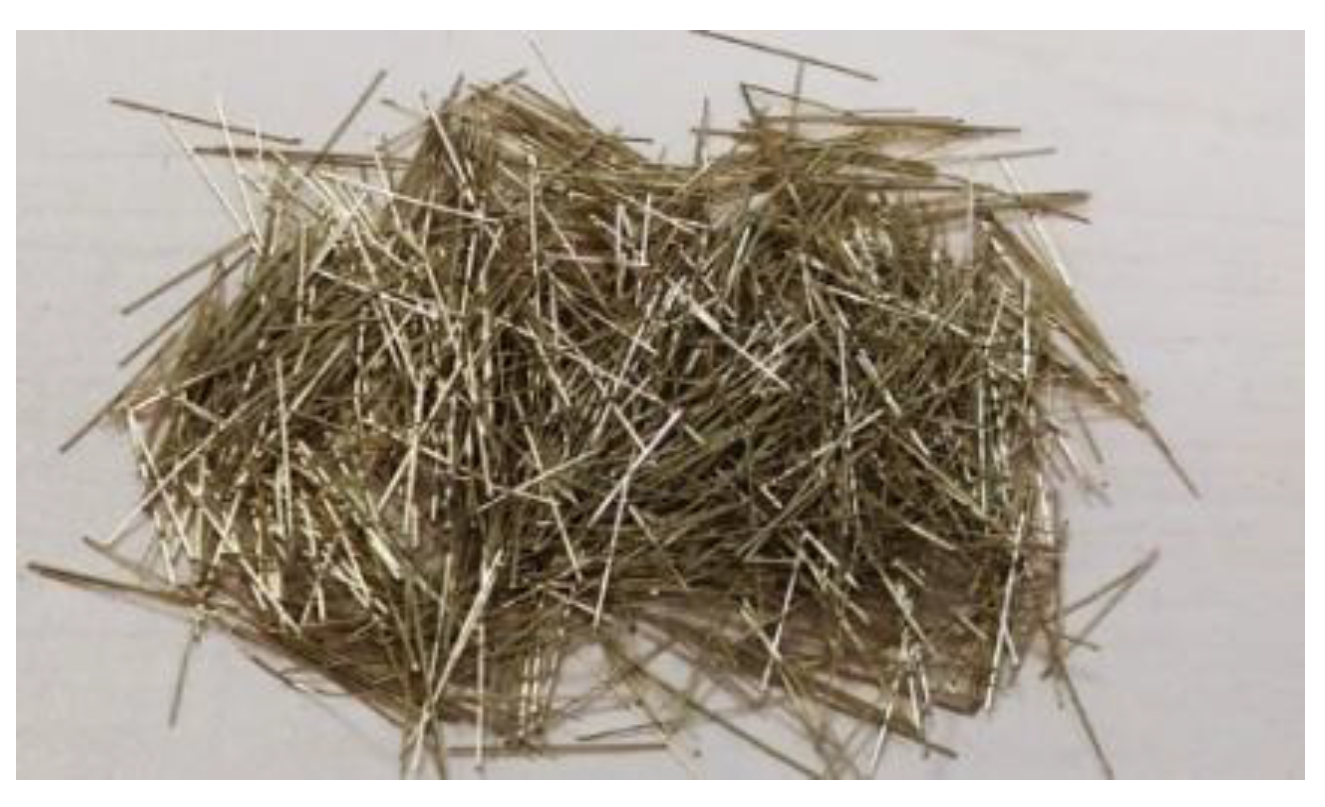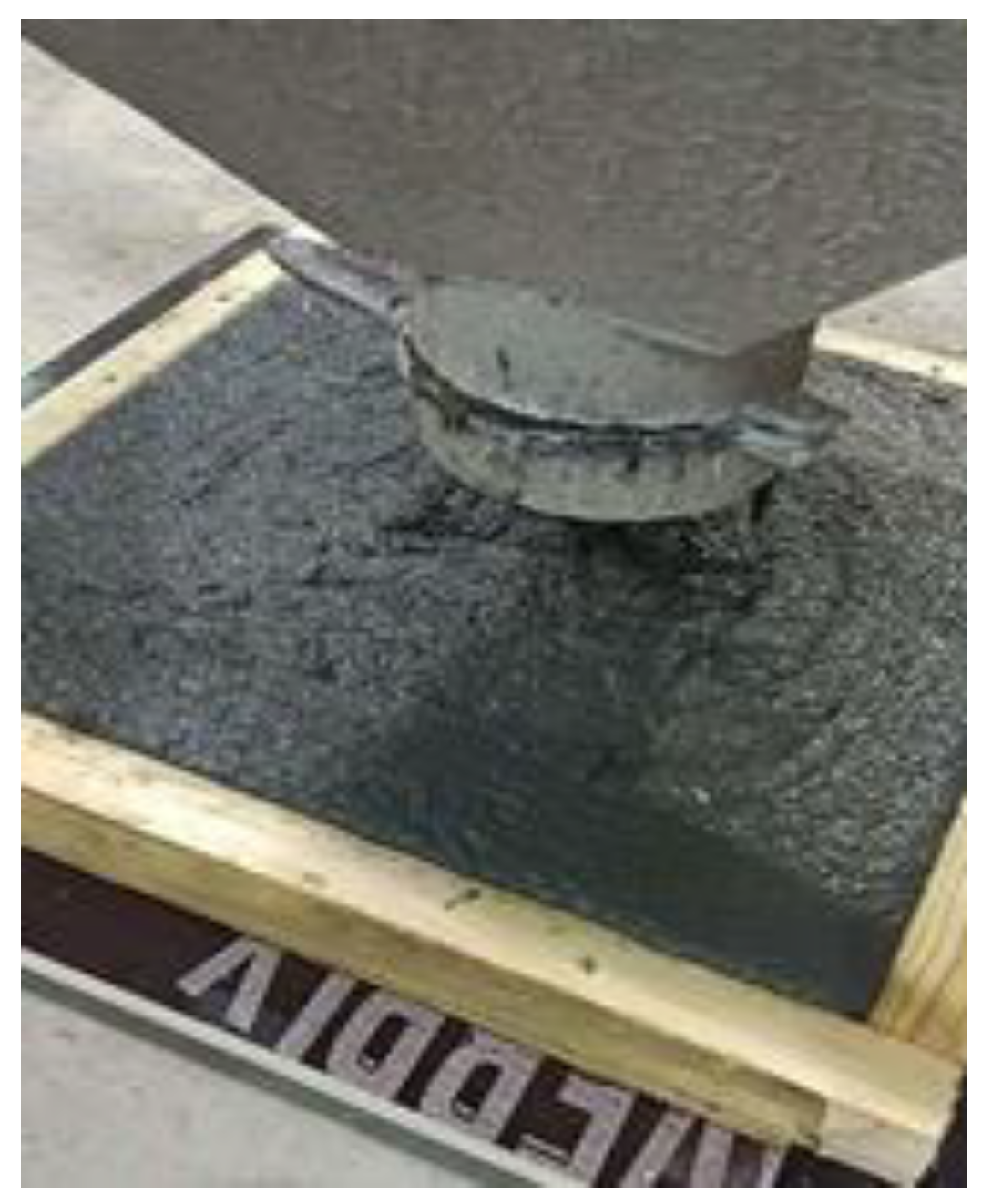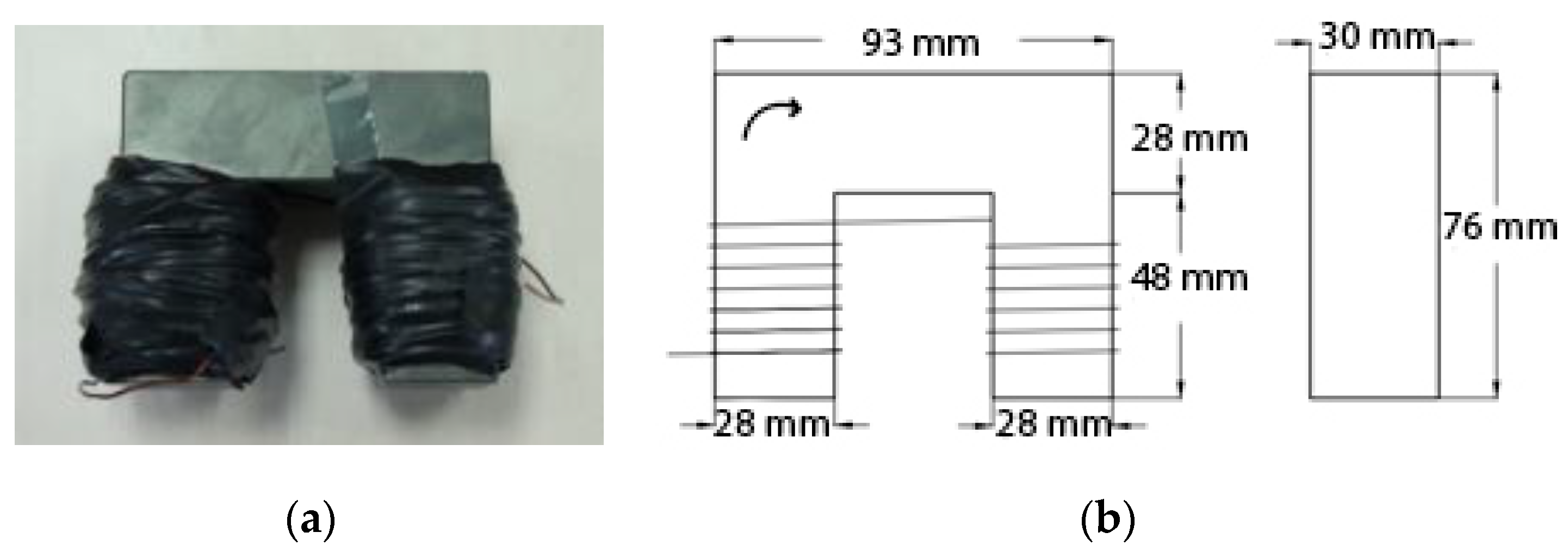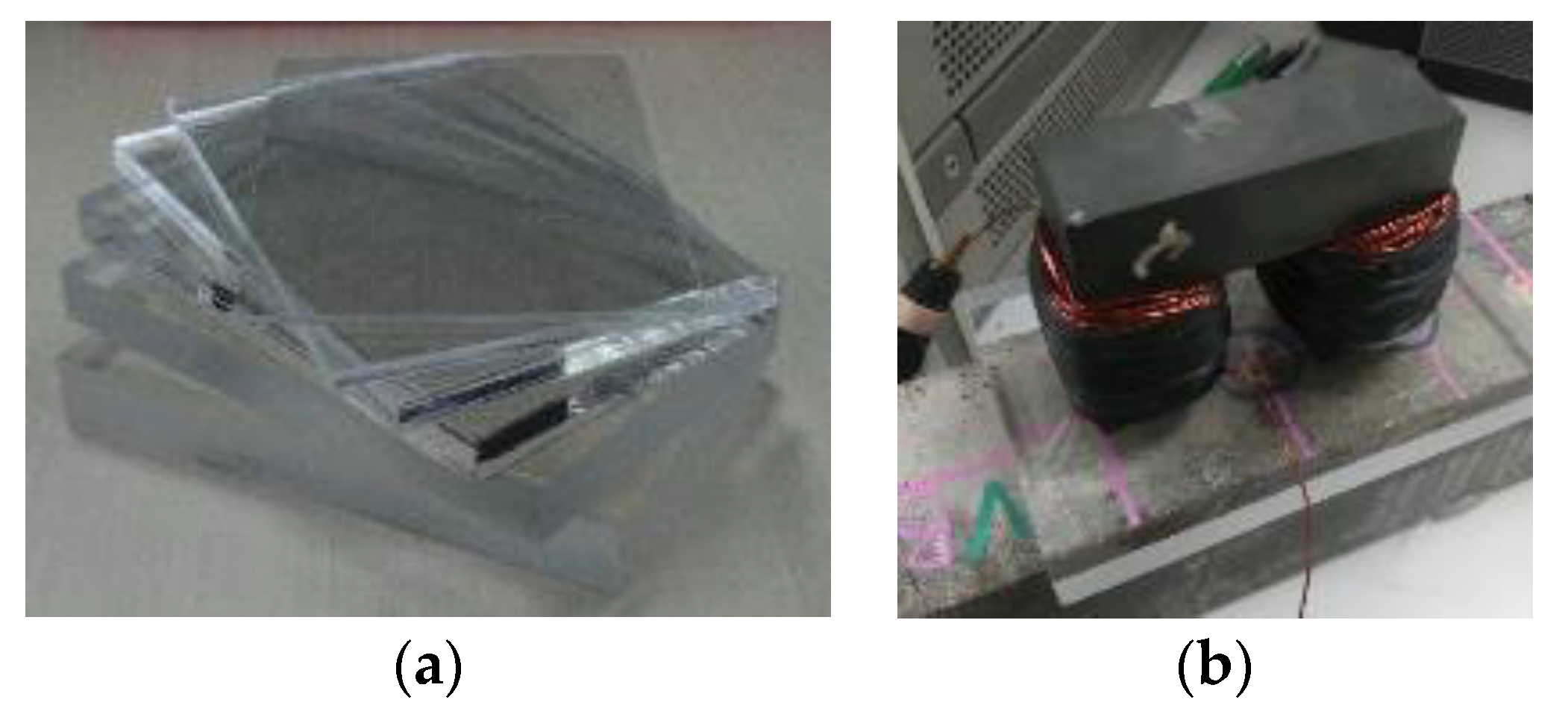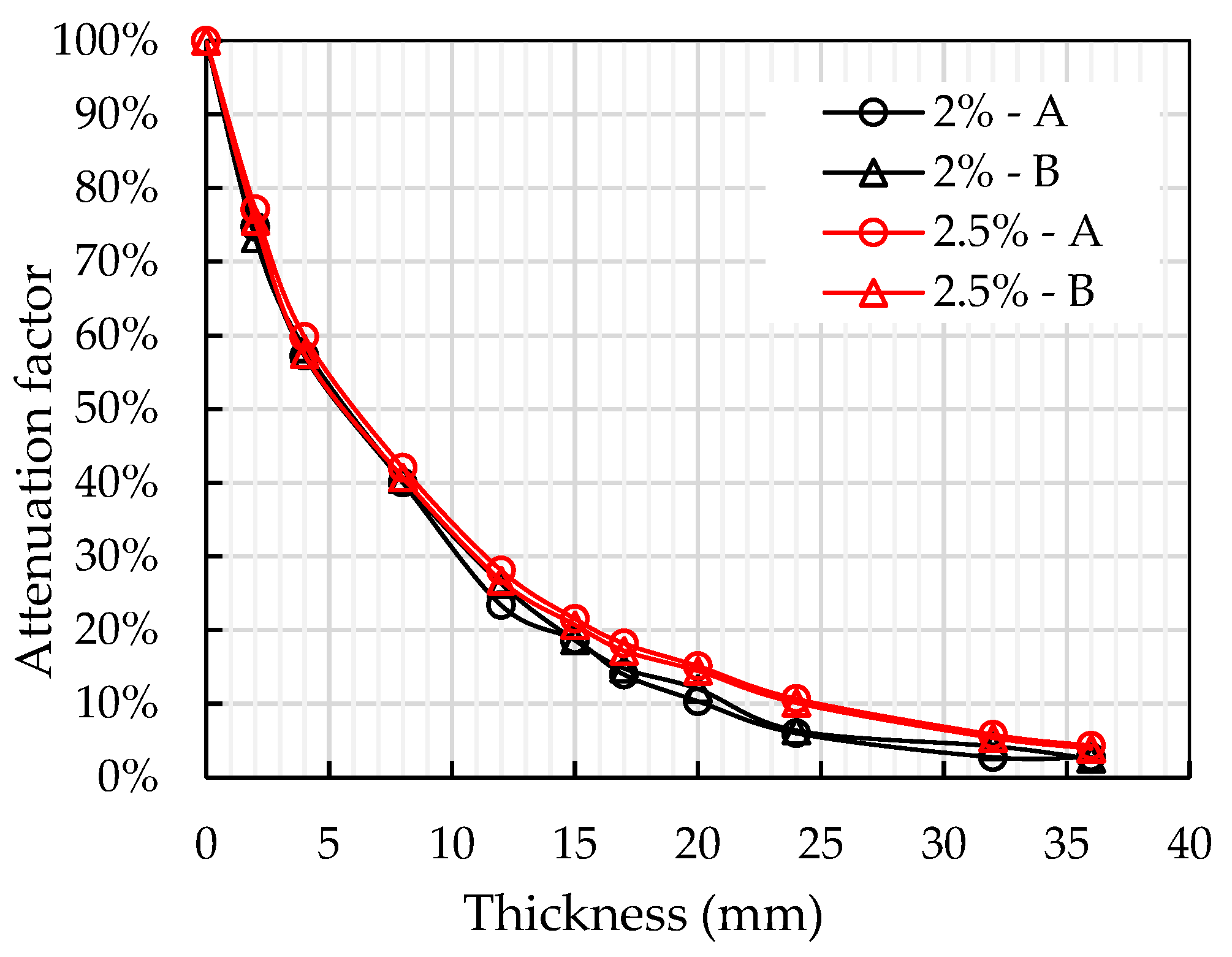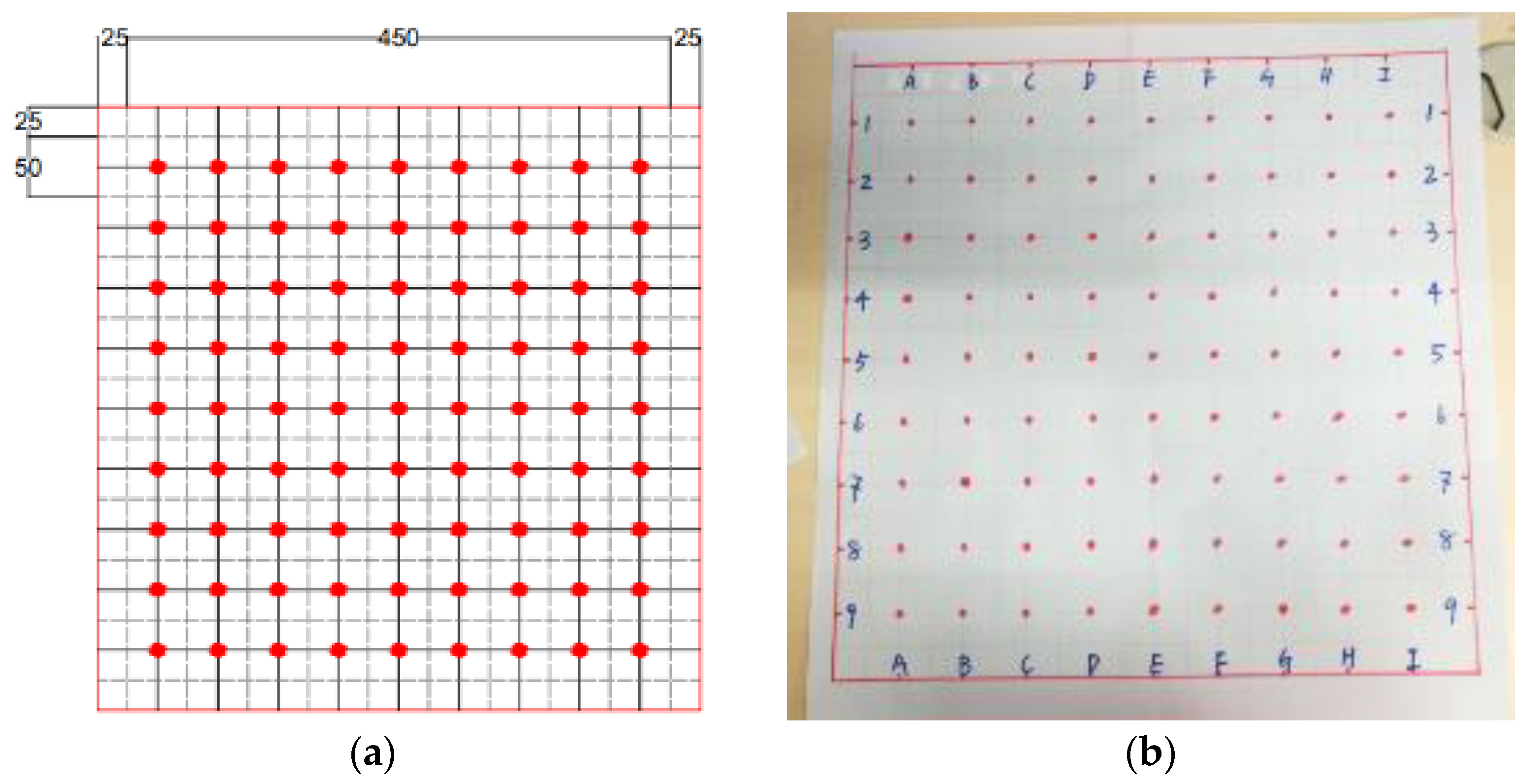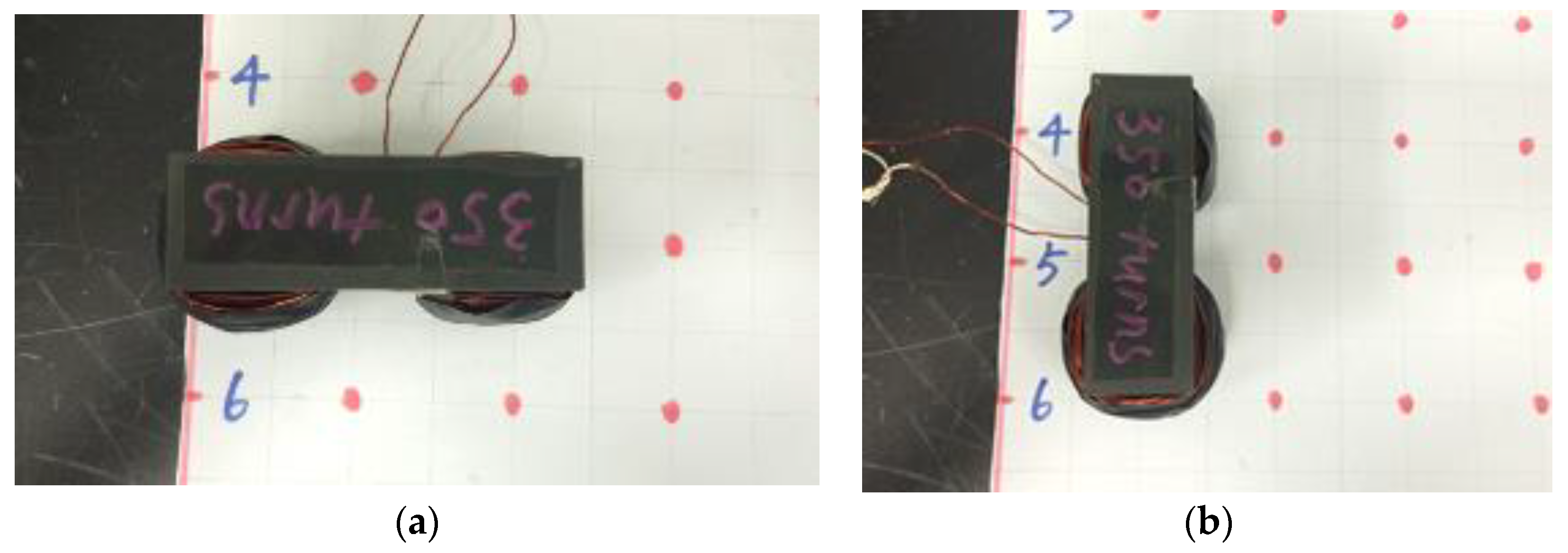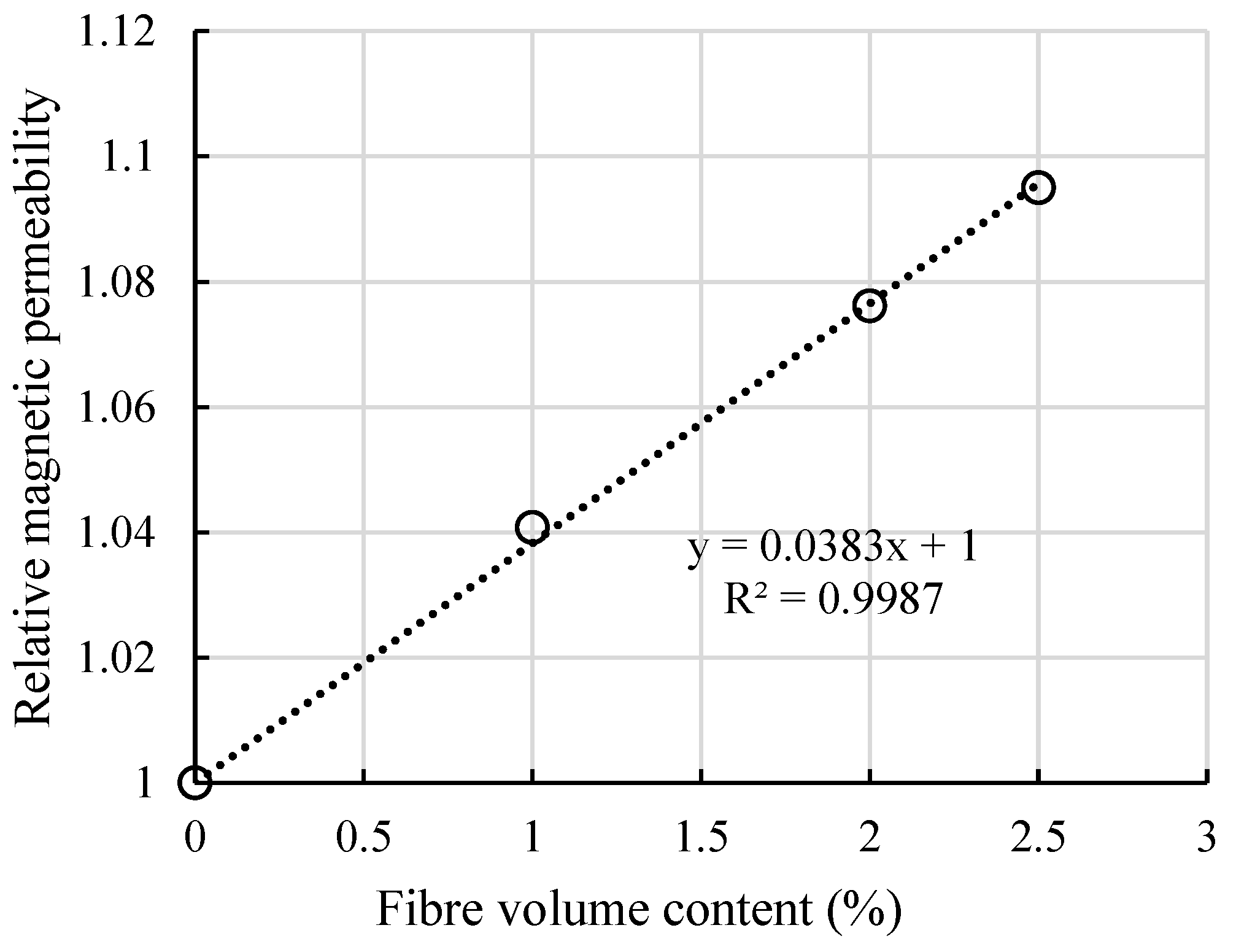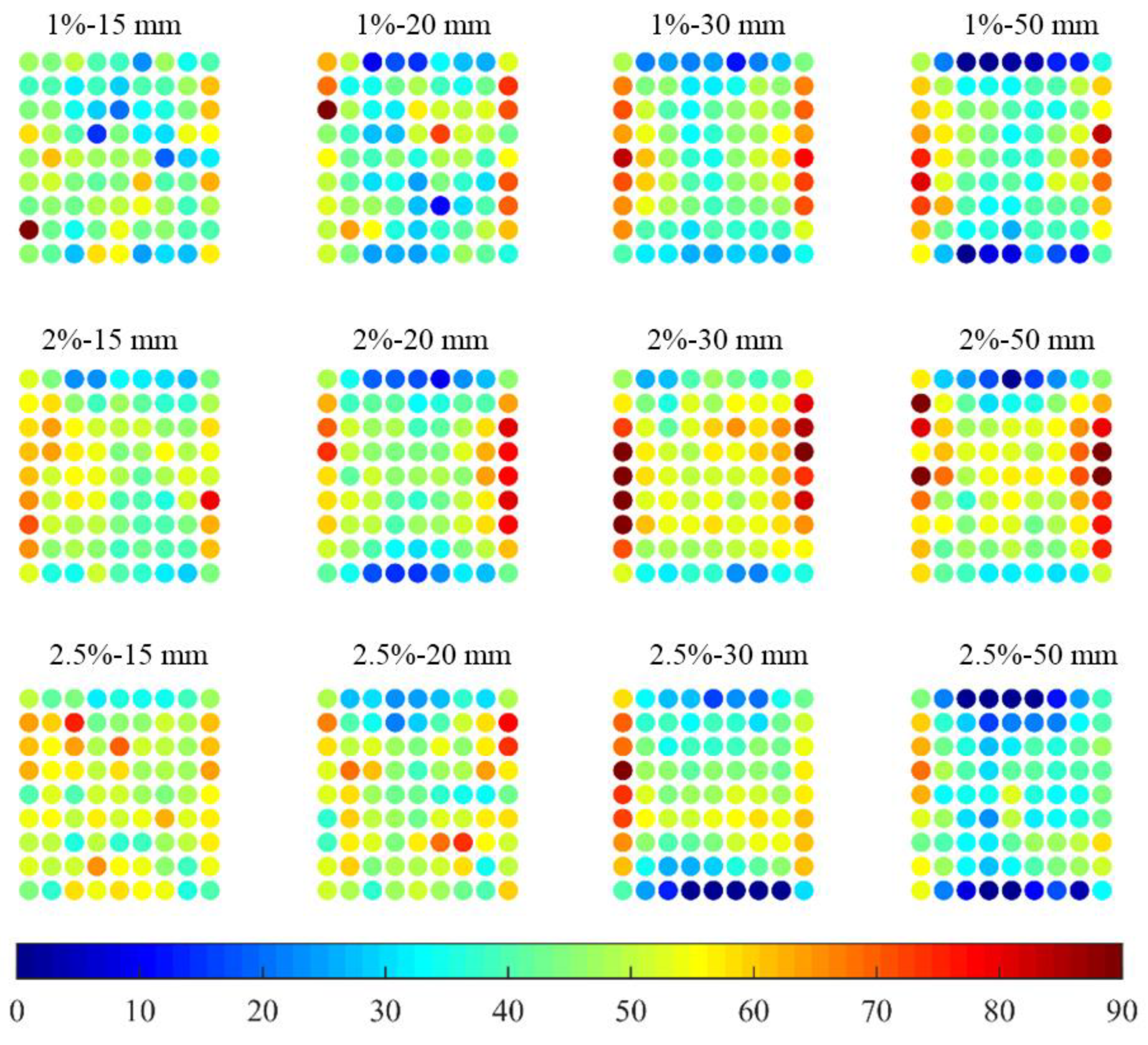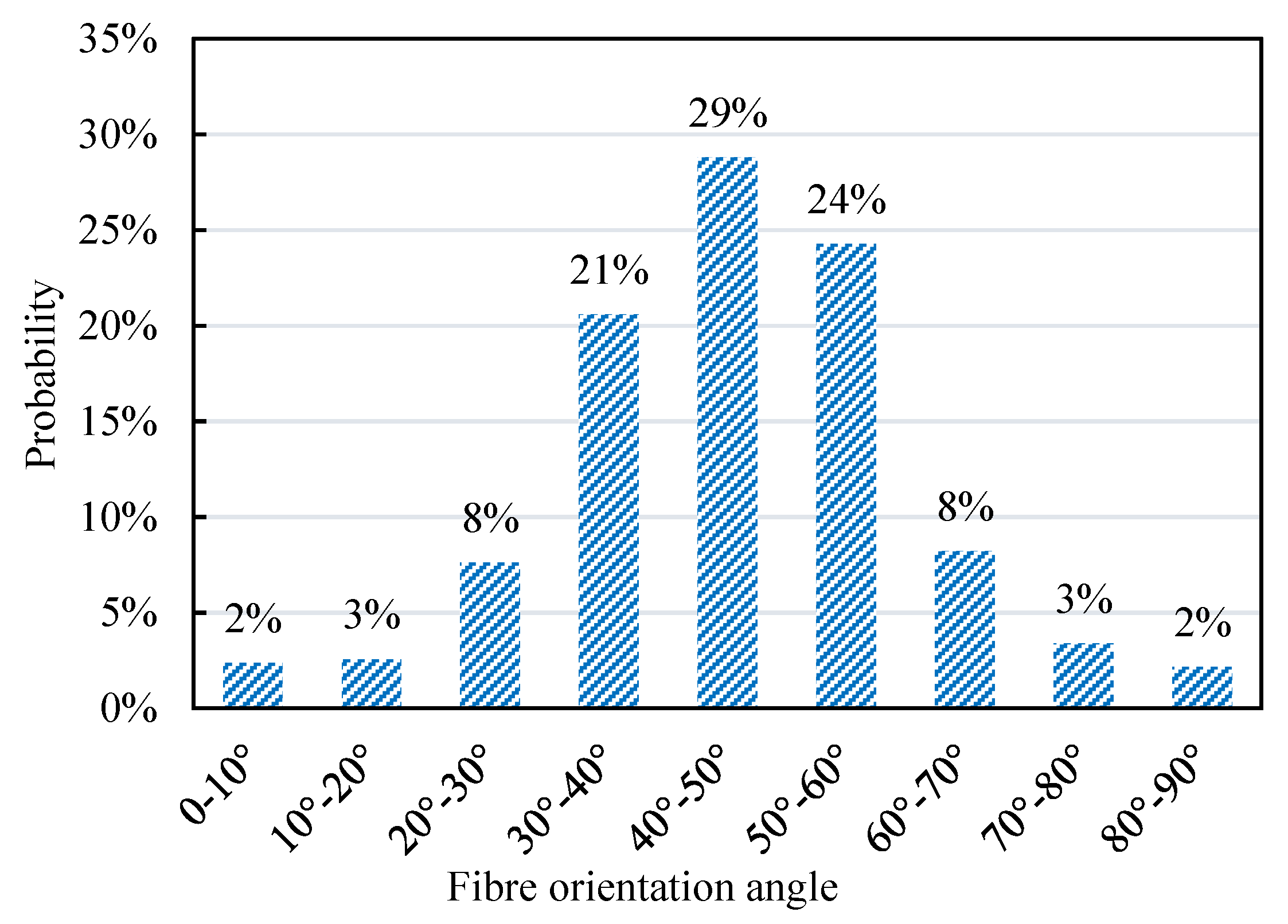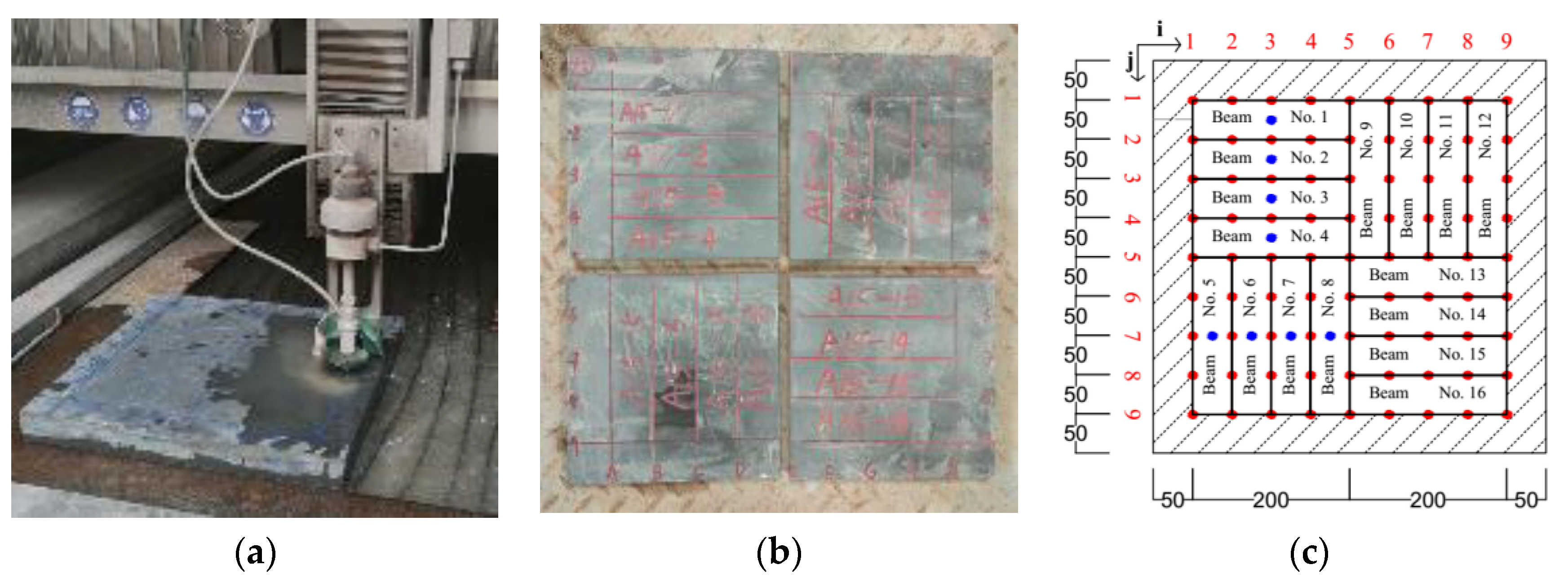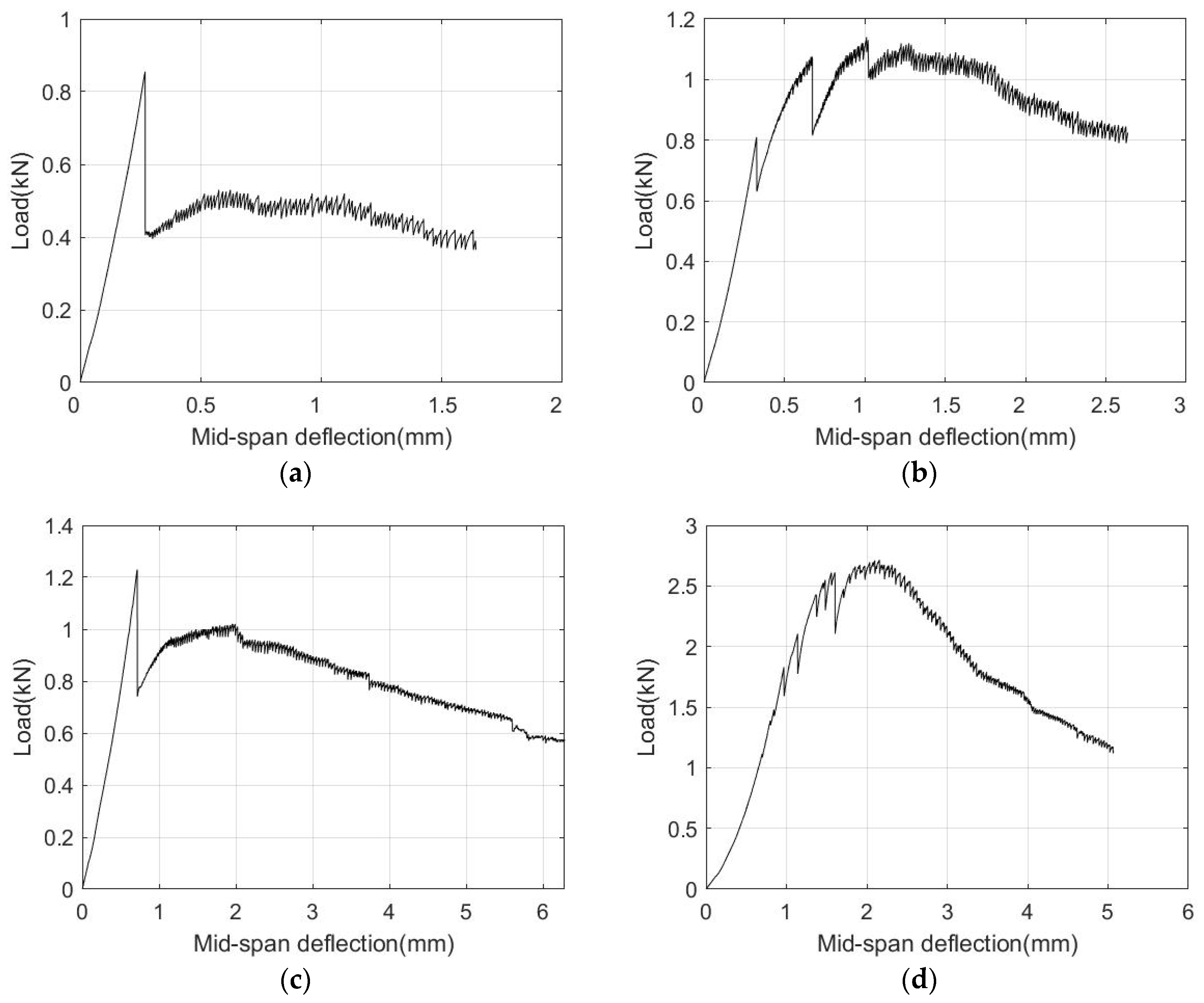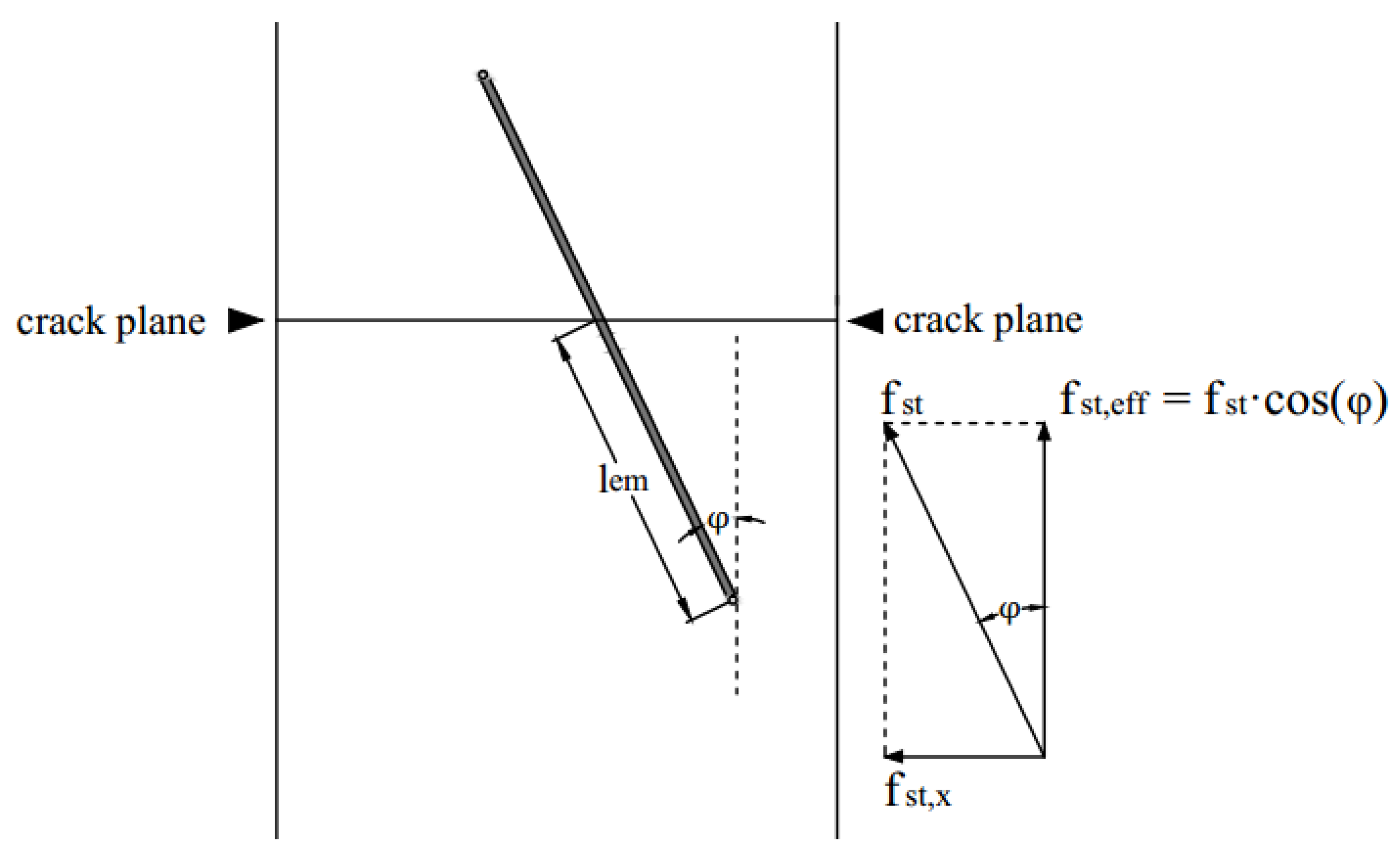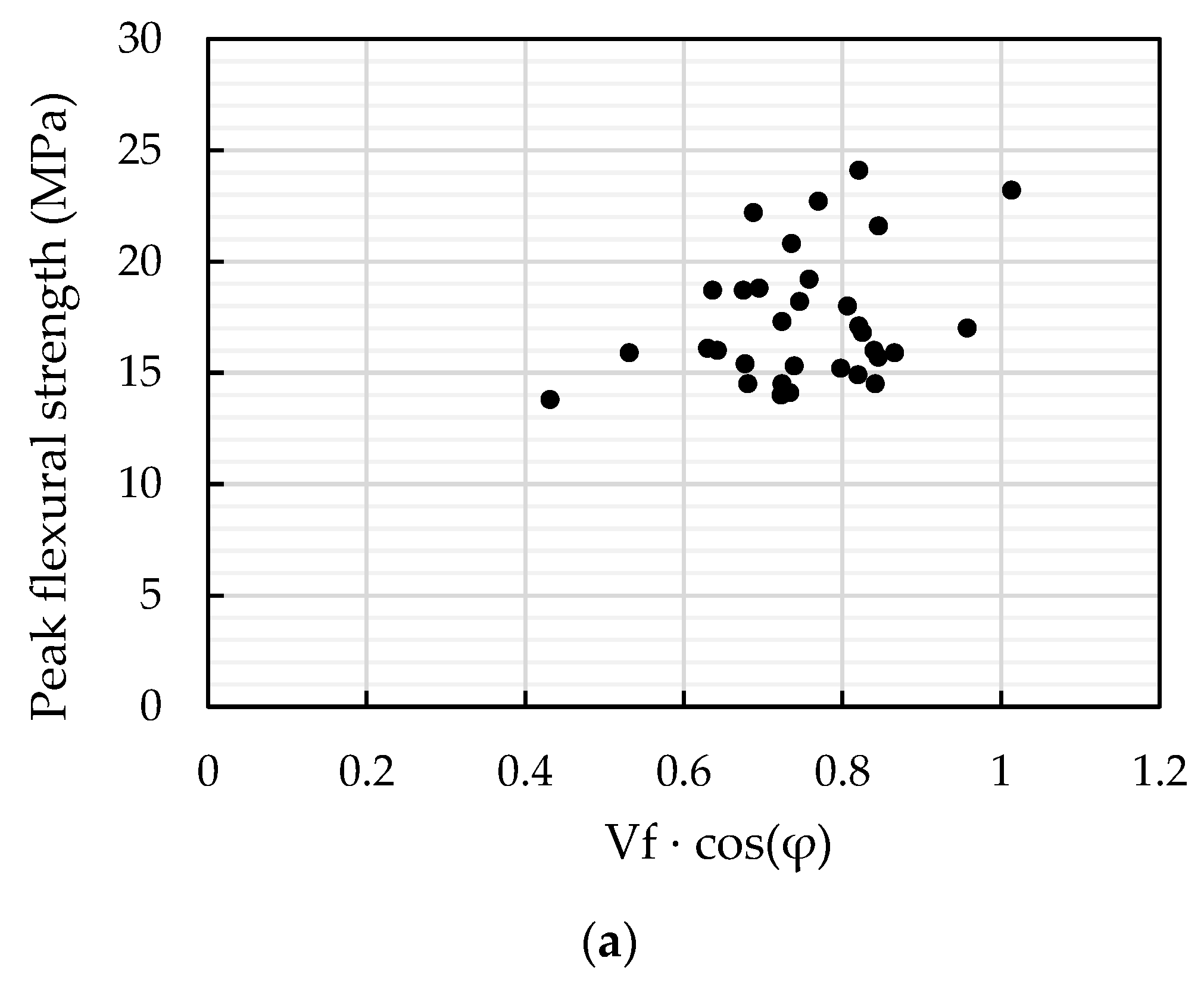1. Introduction
Concrete has been the most significant construction material throughout history. Ultra-high performance concrete (UHPC) was developed as a cementitious composite material with far higher strength, durability, and resistance to external environments than traditional construction materials [
1]. With the addition of fibres, the mechanical properties of ultra-high performance fibre reinforced concrete (UHPFRC) can be further improved especially the performance under tensile loading [
2]. Moreover, the resistance to impact, chemical degradation, abrasion, and fire can also be improved [
3]. UHPFRC has been widely used in airports [
4], bridges, roofs, and cladding [
5].
Comparing to the ascending branch of the stress-strain curve, the fibre addition always has a more significant impact on the cracking stage of UHPFRC. The fibre acts as a ‘bridge’ to bond the separated cracked concrete matrix and then being pulled out gradually, which is also known as the ‘bridging effect’ [
6]. It compensates for the disadvantage of UHPC of being too brittle. However, if the fibres are distributed poorly inside concrete, for example, perpendicular to the loading direction, the bridging effect will be adversely affected.
Many factors can influence the fibre distribution, for example, fibre volume fraction [
7,
8], external vibration [
9], and mixing sequence [
10]. Previous researchers have developed various testing methods to test the fibre distribution inside the concrete matrix, for example, image analysis [
10,
11,
12], AC-IS (AC-Impedance Spectroscopy) [
13,
14,
15], X-ray scanning [
16,
17], and the magnetic core inductive method [
18,
19]. Compared to these testing methods, the C-shape ferromagnetic probe method is more economical and convenient, so this method is chosen to be the detecting method in this research.
The C-shape ferromagnetic probe test was proposed by Faifer et al. [
20]. However, the main focus of their research was on the theoretical background modelling and derivation of the probe, for example, the simulation of flux density of the probe [
21]. The application of this probe was also limited to the basic monitoring of fibre volume content and fibre orientation angle of steel fibre reinforced concrete [
21]. In 2016, Nunes et al. made a simple and cheap C-shaped ferrite core with coils wound on it [
22]. They further applied this testing method on thin UHPFRC plates. By placing the probe on 300 mm × 300 mm × 30 mm specimens in different directions and testing the inductance, the corresponding fibre distribution conditions can be identified. According to Nunes et al., a relative magnetic permeability µ
r,mean, which reflects fibre content, can be calculated as:
where L
φ, L
(90°−φ), and L
air represent the magnetic inductance at φ, (90° − φ), and in the air.
The relationship between the orientation indicator ρ
Δ and the relative magnetic permeability can be expressed as:
Nune et al.’s later research was mainly emphasizing on the detection of uniformly distributed UHPFRC by aligning the fibres with an intense magnetic field [
23,
24], but the intrinsic heterogeneity of fibre distribution had been proved to largely affect the tensile response of fibre reinforced concrete [
25]. Moreover, recent studies were mainly focusing on the relationship between fibre content and flexural performance [
26,
27]. Therefore, both the local fibre spatial and orientation distribution should be taken into consideration, but this area still needs further investigation.
In previous research, the magnetic probe method was only applied on thin plates. If this method is going to be applied for the purpose of checking the structural safety, it is necessary to determine the effective depth of the probe. In order to fill the gap, the effective depth of the magnetic probe was firstly examined and an attenuation factor was obtained to further correct the fibre volume content data. Apart from this, a simplified analytical solution was derived to determine the relationship between the fibre orientation angle and orientation indicator. In addition, compressive tests and flexural tests had been conducted and the correlated equation between mechanical performance and the tested fibre distributions was derived. The corresponding theoretical explanation of strain-hardening behaviour was clarified.
5. Correlation between Magnetic Probe Test and Mechanical Test
To correlate the results between the fibre distribution test and the mechanical test for each beam, the relative inductance values of the blue points in
Figure 13c are also needed. The value is derived from the nearby two red points. For the blue points of Beams 1–4, the average relative magnetic permeability can be expressed as:
For Beams 5–8, it can be calculated by:
For the red points in
Figure 13c, the fibre orientation indicator can be calculated straightly using Equation (12). For the blue points, the orientation indicator can be derived from the nearby two red points. For the blue points on Beams 1–4, the orientation indicator ρ
Δ can be derived as:
Figure 15 shows four typical load-deflection curves for 1% and 2% vol. UHPFRC. Both load-softening and load-hardening behaviours can be observed. Statistically, only 9 out of 32 1% vol. UHPFRC beams had obvious strain hardening behaviour. For 2% vol. UHPFRC, 27 out of 32 beams had load-hardening behaviour after the first crack. For 2.5% vol. UHPFRC beams, 29 out of 31 beams had load-hardening performance.
Apart from the tensile property of the UHPC matrix, both the fibre orientation and fibre volume content can determine whether the beam performs a load-hardening behaviour or not. Initially in the uniaxial tensile test, fibres were fully bonded, and the tensile load was mainly carried by the concrete matrix. Thus, the first crack tensile strength mainly depended on the tensile properties of the concrete matrix, which agrees with previous researchers [
28,
29]. After the concrete cracks, concrete hardly sustained any loads, but fibres were not pulled-out yet due to the static frictional force τ between fibres and the concrete matrix. With the increase of uniaxial tensile load, the static frictional force also increased. Whether the beam had a load-hardening or load-softening performance depends on whether the whole fibre–concrete interfaces can provide enough frictional force, while the frictional force is related to the roughness of the interface, number of fibres (fibre volume content), and effective embedment length (fibre orientation). As can be seen in
Figure 16, the effective static frictional force f
st,eff carried by one fibre can be estimated as:
where
- fst
static frictional force;
- fst,eff
effective static frictional force;
- df
fibre diameter;
- lem
effective embedment length;
- τ
static frictional strength;
- φ
fibre orientation angle.
The total effective static frictional force f
st,n can be calculated as:
Assuming the static frictional strength is constant in Equation (29), it can be seen that the total effective static frictional force has a linear relationship with V
f cos(φ) and number of fibres across the crack plane.
Figure 17 shows the relationship between V
f cos(φ) and the peak flexural strength. For 1% UHPFRC, there is no obvious trend, mainly owing to the insufficient frictional force to support load-hardening performance, therefore, the peak flexural strength was determined by the properties of the concrete matrix. A linear relationship can be found for 2% and 2.5% UHPFRC. If the concrete matrix w consistent, the relationship between the uniaxial tensile strength f
t,φ1, f
t,φ2 at different fibre orientation angles φ
1, φ
2 can be calculated as:
